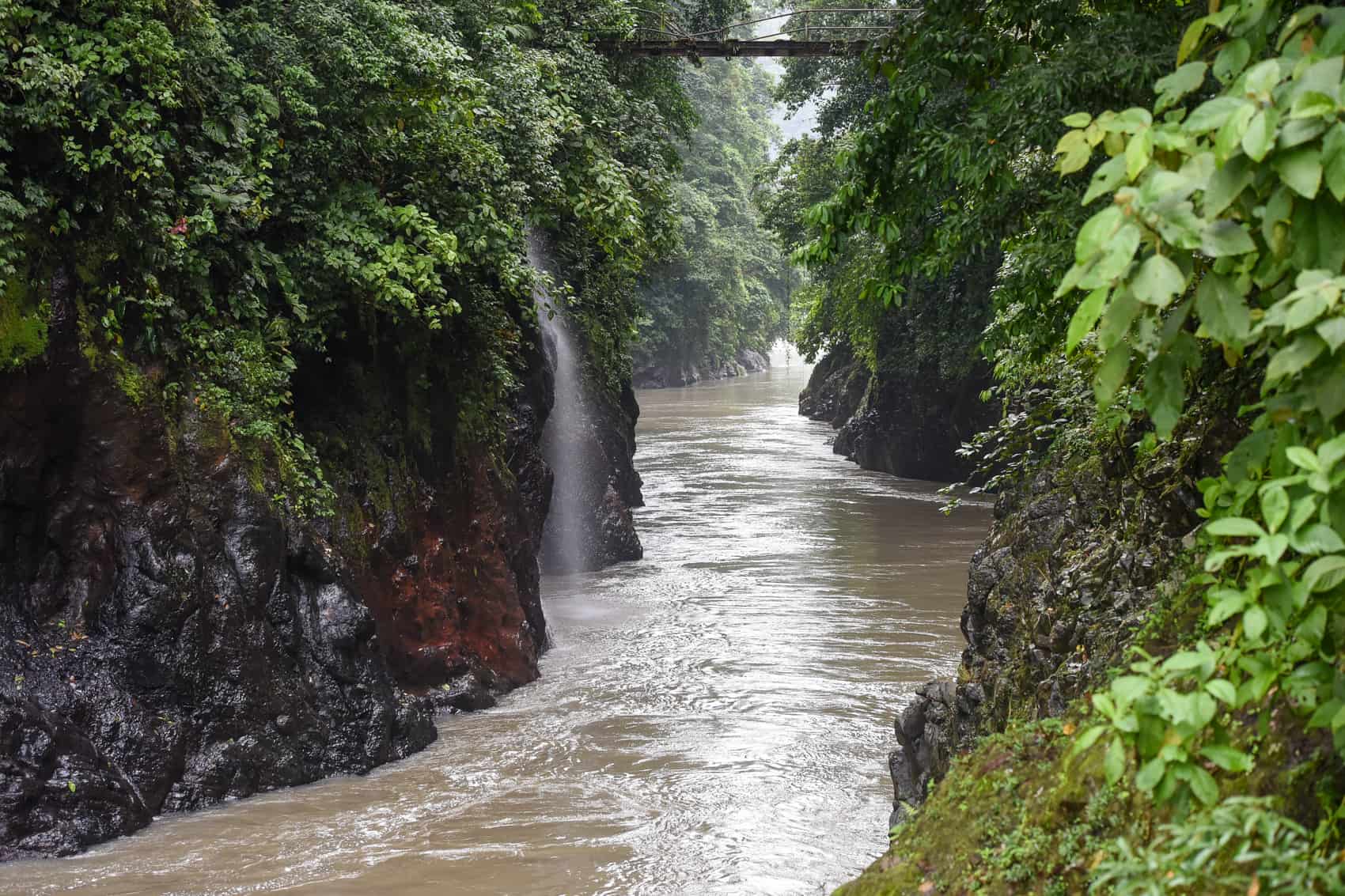TURRIALBA, Cartago — It was the appropriately-named Rodeo rapid of the Pacuare River where the raft bucked my colleague Alberto Font into the air so violently I thought he would fly overboard, but instead he collided with the woman paddling to his right and collapsed in a heap in the bottom of the boat.
“I thought we lost you,” I said to Beto, The Tico Times’ photographer, when we reached stiller waters.
“I thought so, too,” Beto said. “I thought I was in the water, with her!” He laughed and switched to Spanish and told everyone there was so much water and air and boat that he didn’t know which way was up or which element he was in.
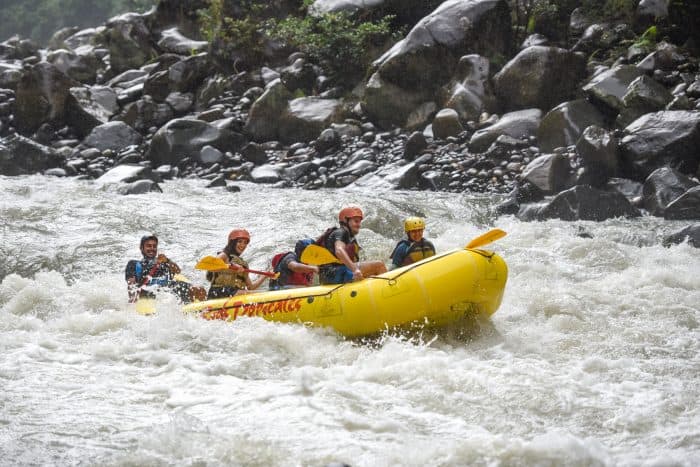
It was all in a day’s fun on a fabulous float down the famous Pacuare, but the occasion for this merriment, like the skies overhead, came with some dark clouds.
It was the 10th anniversary of the 2005 plebiscite in the Caribbean slope town of Turrialba that resulted in a 97 percent vote against the construction of hydroelectric dams on the Pacuare River, which is often called one of the greatest whitewater rafting rivers in the world.
Yet the winners of this plebiscite believe the Costa Rican Electricity Institute, or ICE, is still plotting to build a dam here, which they say would uproot and disinherit the indigenous Cabécar, pollute a clean, beautiful and world-class river, scare away wildlife, destroy the vital whitewater rafting industry in this region and turn the Pacuare into the next Reventazón, a formerly famous rafting river that critics say was ruined by ICE dams.
Who knew?
To celebrate the anniversary of the 2005 plebiscite and raise awareness of the consequences of damming wild rivers, Turrialba, located 60 kilometers east of the capital, has organized a two-day festival on Aug. 28 and 29 called JAKÜII/PACUARE+10. (Jaküii is the indigenous Cabécar word for the Pacuare, although some will tell you that Pacuare is also a Cabécar word.)
On Friday, a week before this festival, organizers treated a half-dozen journalists to a day of rafting the Pacuare, with a news conference on current efforts to protect the river — most intriguingly, on negotiations to have Costa Rican President Luis Guillermo Solís sign a decree this week removing the Pacuare and Savegre rivers once and for all from the country’s plans for future hydroelectric generation.
“We started talking about this since long before the plebiscite, for more than 10 years,” said Osvaldo Durán Castro, the leader of these efforts, who is also a professor at the Technology Institute of Costa Rica in Cartago and an avid rafter.
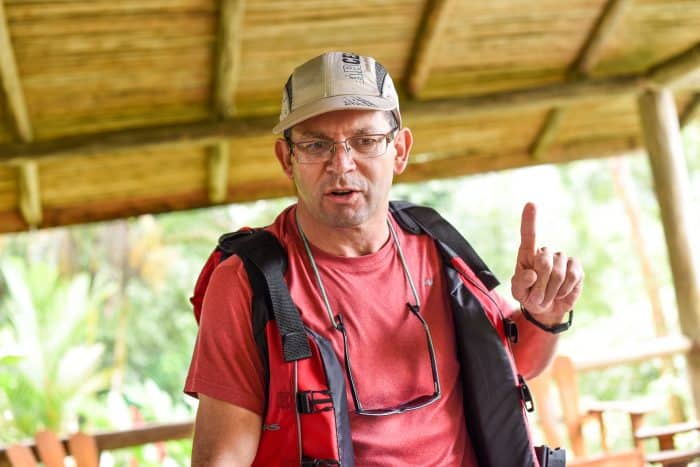
“What’s special about this is that for the first time in history, we are sitting down and talking to the government,” he said.
Durán said his group first presented its ideas to President Solís and Environment Minister Edgar Gutiérrez last August at Casa Presidencial, and he said they were interested and receptive.
“What we’ve done in the past year is negotiate the decree with them,” he said. “And all indications are that we’re going to have a decree next weekend.”
His group is meeting this week with the presidency and the Environment Ministry to iron out details in hopes that Solís can sign the decree in Turrialba during the Aug. 28-29 festival.
Mind you, that wouldn’t be the end of the battle.
“It’s very, very possible that they will come the next weekend and sign the documents, the president and the environment minister,” said Viladys Rivera Reyes, a fellow activist with Durán and a primary organizer of the festival in Turrialba. “But it’s just for 15 years and the next president can revoke it.”
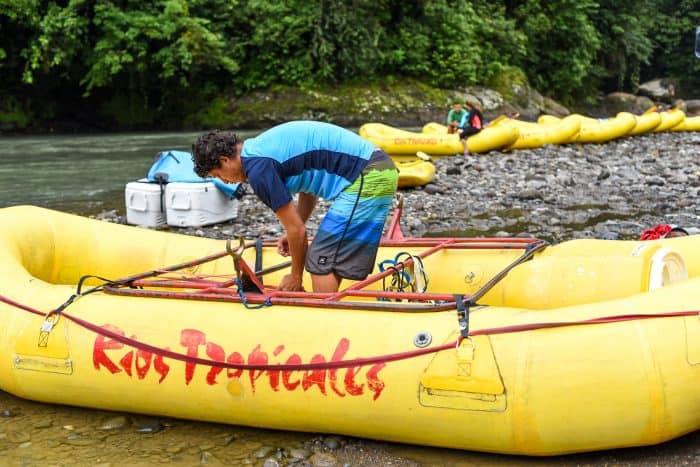
Assessing the threat
I spent several days reaching out to experts on the Pacuare, and I found that 100 percent of my correspondents were opposed to damming this majestic river, while zero percent were in favor.
So with such a large, united and organized opposition to the dam-nation of the Pacuare, who spoke for the adversary they were organizing against?
I reached out to ICE with a number of questions and received this response from communications coordinator Adriana Víquez Garita:
“We recommend that you explore this matter with the Executive Branch and MINAE,” she wrote, noting that they have taken up the issue. “We (ICE) are respectful of what the authorities decide and we will continue to do what’s necessary to fulfill our mandate established by law: to supply national demand.”
In 2009, four years after the plebiscite, ICE pledged that it would impose a 20-year moratorium (until 2029) on any plans to tap the Pacuare’s hydroelectric potential.
If President Solís signs the decree next week, and if it stands for 15 years, then the Pacuare is safe until 2030.
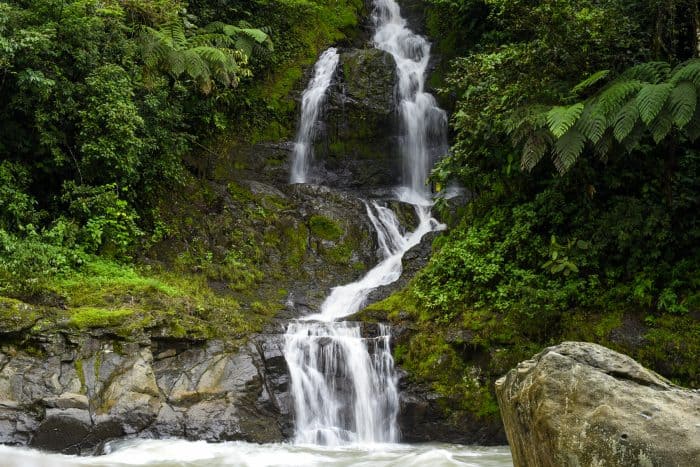
I said to Durán during the news conference: “If there’s already a plebiscite that says they can’t build a dam here, and besides, in 2009, ICE said it wasn’t going to do anything for 20 years, I’m not sure if I understand the urgency, or if there is a real threat. I’m not sure that ICE really wants to build a dam here.”
“I’m going to put it like this,” Durán said. “We won a plebiscite in 2005 with 98 percent of the people, 97 percent of the people saying ‘no, we don’t want dams on the Río Pacuare.’ We won the plebiscite, but that doesn’t mean that ICE has to comply with the plebiscite. The plebiscite is a political act that’s good for us, but ICE doesn’t have the obligation to recognize it. In fact, it has not recognized it.”
Durán provided detailed information from ICE demonstrating that Costa Rica’s current power supply well exceeds its demand, arguing that there’s no need to build more dams.
But what exactly are ICE’s stated plans for the Pacuare?
“At this time,” Durán explained, “ICE’s expansion plan that goes from 2014 to 2035 doesn’t include the projects on the Pacuare, Savegre and [other rivers]. These aren’t included, they say, because they haven’t finished the studies. … But it does clearly say that once they’ve finished their studies, those projects will be put back into the electricity generation plan.”
“But they say they aren’t going to do anything until 2029,” I pointed out.
“They’ve said a lot of things,” Durán replied.
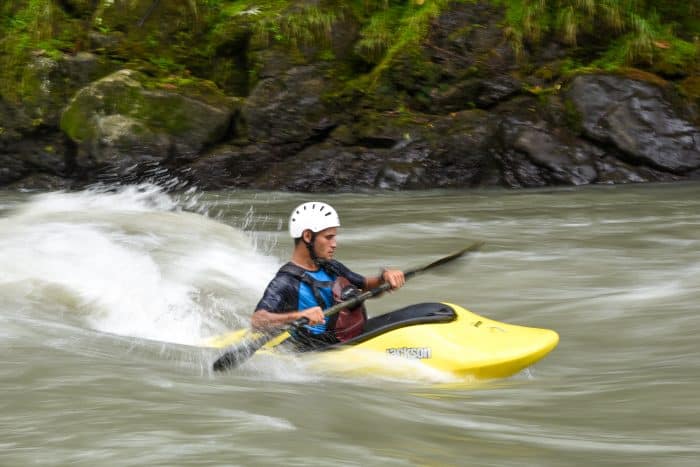
The filmmaker
Denielle Perry, 37, is a Ph.D. candidate in geography at the University of Oregon who spent years leading rafting tours on the Pacuare and Reventazón and who co-directed a 40-minute documentary that premiered earlier this year called “Troubled Waters: Costa Rica’s Río Pacuare.”
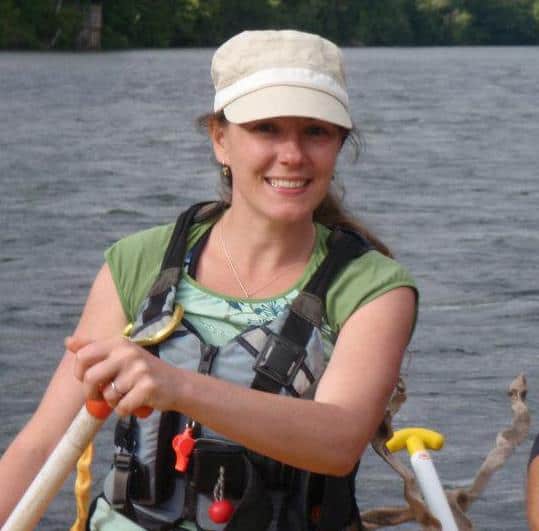
“Today, when we have over a century’s worth of environmental and social impacts to look back upon when considering hydropower development, we’ve learned that … it’s quite destructive,” Perry said on a Skype call from Oregon.
“ICE is an entity whose entire mandate is to investigate and develop energy resources for the development of Costa Rica,” she said. “So when you look at ICE and its constitutional mandate, which was set up in the 1940s, that’s their raison d’etre, their reason for being.
“When you look at a river like the Pacuare, which has year-round water flow and no development, the water is clean, there’s a lot of vertical gain, it’s an ideal river for dam developers. They’re not thinking about rafting or indigenous communities.”
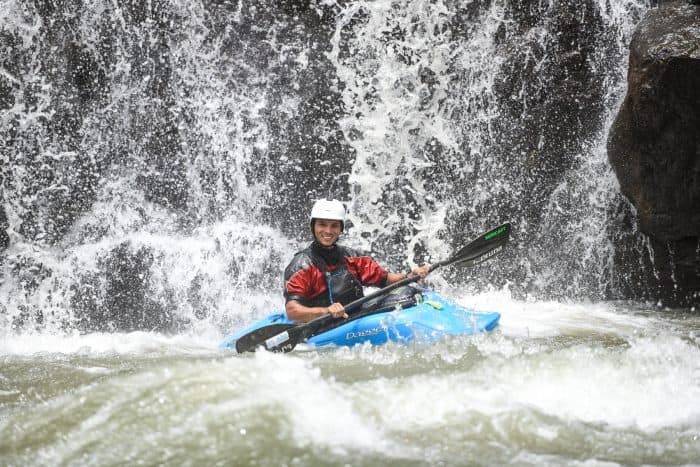
Perry said ICE’s efforts to dam the Pacuare have a long history.
“In the 1990s, there were plans to dam at Dos Montañas, near the end of the day stretch, a place with a canyon with two walls, very close together,” she said. “It’s kind of mystic, there’s water falling from the walls and the remnants of ICE’s work in there doing exploratory [studies] … drilling into walls to see what the integrity of that rock structure would be.
“It’s considered the most ideal place in the country to build a dam, because the walls are so close together and they’re very tall.”
But a magnitude-7.6 earthquake in Limón in 1991 shook part of the cliffs loose and put an end to plans to build at Dos Montañas, Perry said.
ICE turned its attention to an area upstream, she said, near Bajo Pacuare, but that only opened up another can of worms.
“It would flood out those communities, so there’s real concern about what would happen to the Cabécar people who live there,” she said. “They would just be pushed further into the rain forest, away from their traditional lands.”
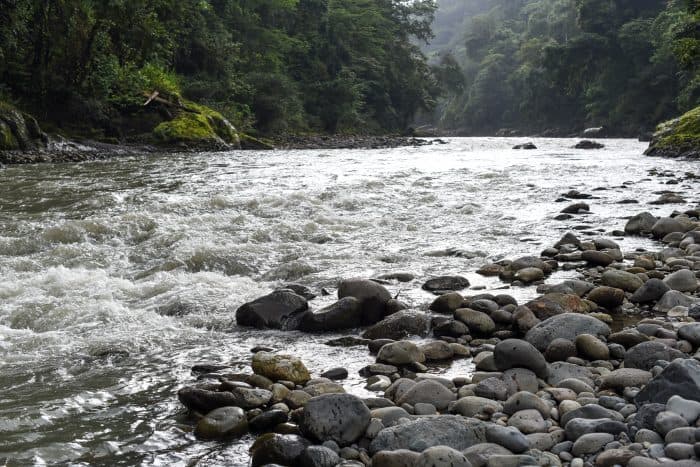
Perry moved to Costa Rica in 2001 and started a group called Amigos del Río Pacuare. She said after the plebiscite passed in 2005, then-President Abel Pacheco pledged to designate the Río Pacuare a national park.
“That’s what we were working toward,” she said. But… “One issue with national parks is when you make something a national park, then the people who have traditionally inhabited that area can’t live there anymore.”
Durán said, “We’re not going to ask them to create a national park because it’s very difficult, but the political decision can be made that based on the numbers of electricity generation, this river does not enter into the expansion plan, and this other river doesn’t either.”
Perry said she was there when ICE gave notice that it would impose a 20-year moratorium on damming the Pacuare.
“The reason why they had the moratorium wasn’t so much that we were fighting against the dams, it’s because there was a series of earthquakes taking place in Costa Rica,” she said. “An earthquake in Sarapiquí breached the dam and sent this wall of water downstream, wiped out trees and covered farms with mud. …
“When you build a dam and have an artificial reservoir, that’s a lot of weight, and it can increase tectonic activity,” she said. “My understanding was that this moratorium would give ICE 20 years to do geological investigations about the viability of doing a dam on the Pacuare.”
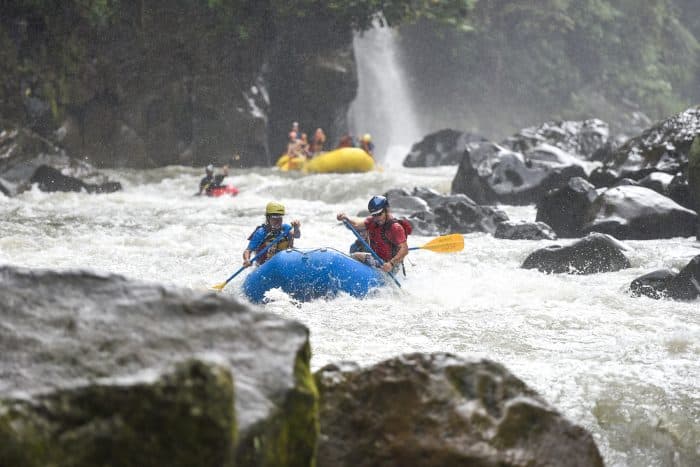
The rafting company owner
Rafael Gallo, 57, was in his late 20s in 1985 when he founded Ríos Tropicales, probably Costa Rica’s most successful rafting company.
“Damming the Pacuare would be a big, big, big environmental mistake for Costa Rica,” Gallo said in a telephone call from Florida.
“The Pacuare has got the right length, the right gradient, clean water, great vegetation, it’s got wildlife, indigenous population, warm water, one rapid after another,” he said. “It’s got all the qualities you would ask for in commercial rafting or rain forest exploration.”
And his company is committed to do its part to save it.
“We help any group that would do any intelligent opposition to the project,” he said. “We don’t support any monkey-wrenching, but if it’s intelligent and peaceful, we support that.”
The indigenous people
Kerlin Salazar Pérez, a 33-year-old Cabécar man who was invited to come on the rafting trip Friday to talk to the journalists, said his people have long fought ICE’s plans on the Pacuare.
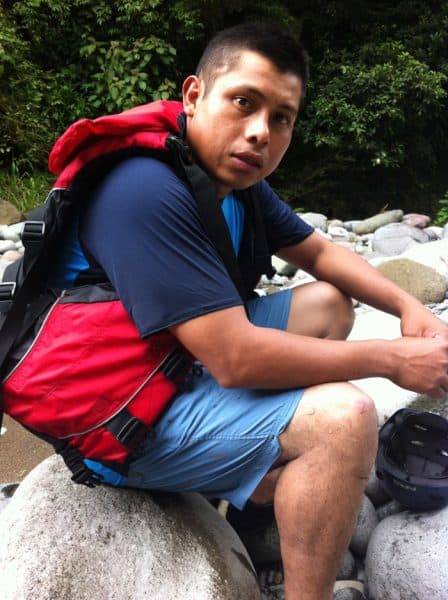
“For many years, for more than 20 years they’ve planned a dam on the Pacuare,” he said. “But we’ve put up a very strong fight, and we’ve stopped them a little bit. But then the government changes.”
I asked Kerlin about ICE’s pledge in 2009 to do nothing for 20 years.
“They said that,” he agreed. “But I know that if we do nothing, if we don’t say anything to them … the people of ICE have a lot of money, a lot of resources to do it, and it’s not something they’re planning right now, it’s something they’ve been planning for many years.”
The rafting guide
Luis Sánchez Hernández, a rafting guide known as Luigi, recalled the glory days of the Reventazón, when Olympic kayakers and canoers from Europe would go there to train during the European winter.
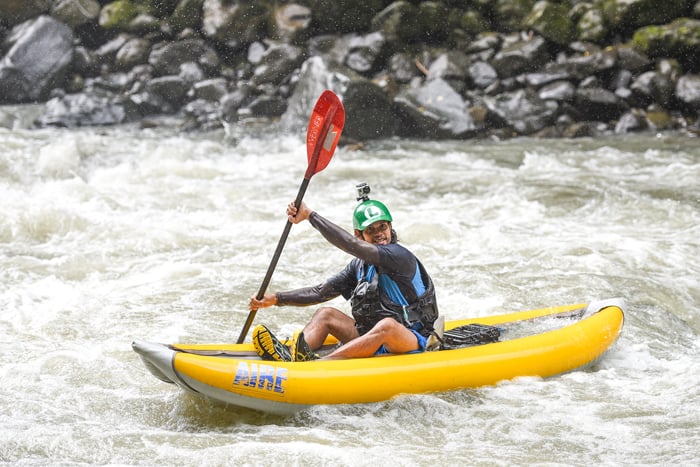
“It was extremely famous,” he said. “They came here and they paddled all day, practicing, training. … People used to come to Turrialba for two months, three months, bringing money into the hotels, bars; a whole economy revolved around that.”
Completion of the Angosturas dam in 2000 put an end to all that, and made most commercial rafting companies in Turrialba abandon the Reventazón in favor of the Pacuare.
Sánchez said a huge amount of sediment accumulates at the dam, and when they open the gates it kills the fish in the river.
“You can see it. There’s so much sediment that it gets stuck in the fish’s gills and chokes them and they die,” he said. “And all that sediment washes downstream, to Tortuguero, to the sea.”
The helmsman
Our infallible capitán on a long, rainy day of rafting the Pacuare was Daniel Bustos Araya, 28, who has been a river guide for nine years, since he was 19.
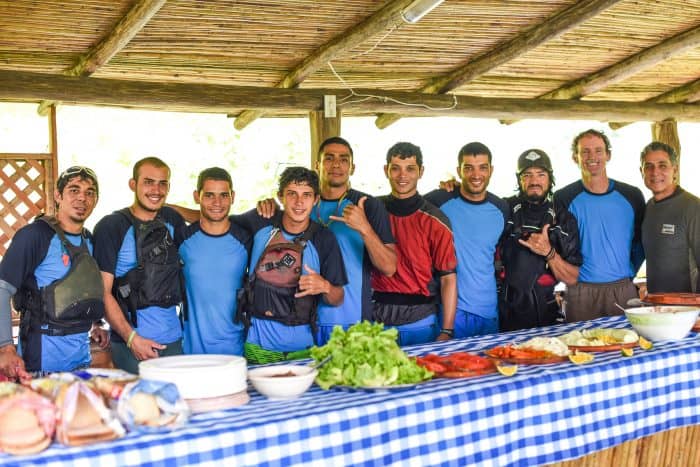
As we admired the stunning scenery during a four-hour, 21-kilometer float, Bustos kept us on task during the fast stretches, when we had to paddle hard: “¡Adelante! ¡Adelante! ¡Fuerte!”
The ultimate distress call was “¡Al suelo!” or “¡Abajo!” — meaning abandon all hope of paddling and get down in the bottom of the boat.
Before the larger rapids he would often say, “Buena posición,” meaning we’d better wedge our feet tight because we were coming up on another giant washing machine. I actually developed blisters on my left foot from jamming it into the bottom of the raft so hard.
Toward the end of our long float, feeling exhausted and tired of being wet, I heard Bustos urgently shouting, “¡Adelante! ¡Fuerte!” as we plunged into another rapid.
I found myself laughing uncontrollably in the middle of this rapid, because the waves were so big I reached out to paddle and found nothing but air, then reached out again and was completely swamped by a giant wave — as if the river were paddling me.
“It’s extreme adventure,” said Bustos when we reached quieter water. “It’s safe, but it’s extreme.”
Perry, the filmmaker and former rafting guide, said as good as the rafting is here, that’s not her main reason to want to save the river.
“In 2001 I had typhoid fever and was given the wrong diagnosis and therefore the wrong treatment. I almost died,” she said. “Sylvia Rodríguez, a Cabécar women featured in the film, made a remedy and hiked out of the Pacuare canyon to the road, then took the bus to my house in Turrialba. This took her the whole day. Her act of kindness and concern for me is what cemented my dedication to help save the Río Pacuare – her home.
“It’s not about rapids for me, though they’re great. It’s about humanity.”
For more info: http://riopacuarecostarica.org
Contact Karl Kahler at kkahler@ticotimes.net.

